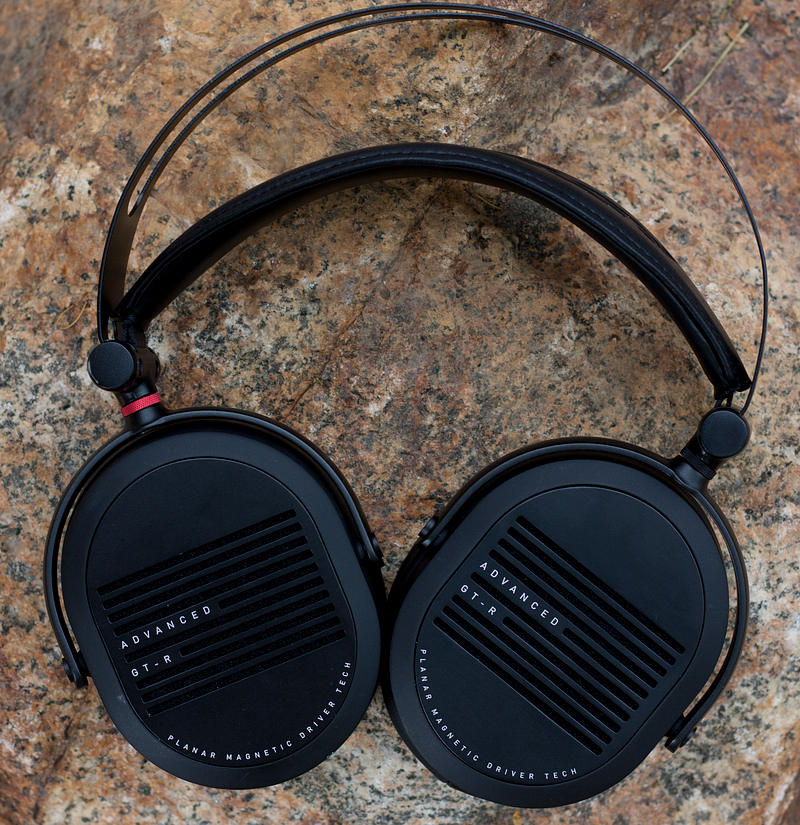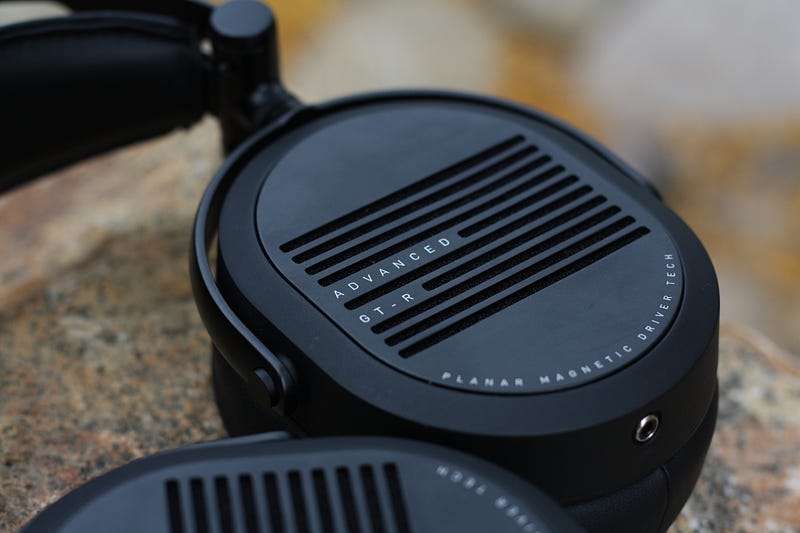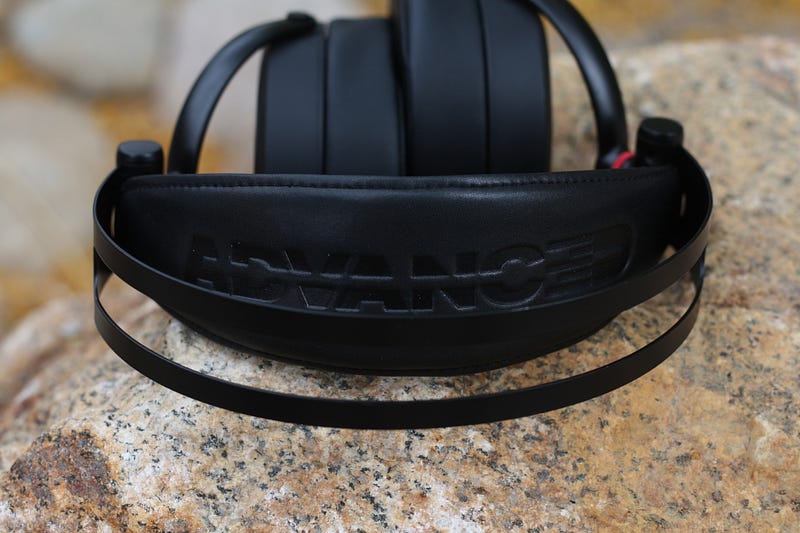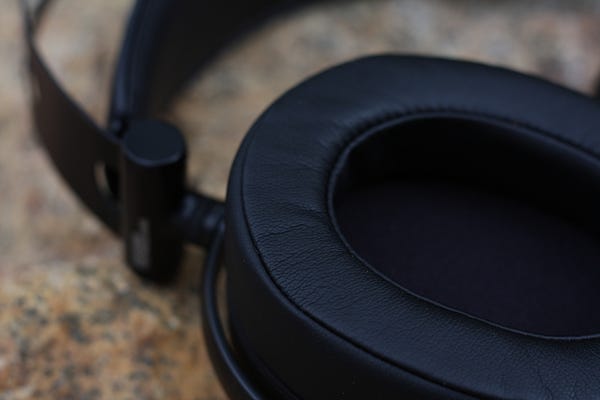
I am no stranger to Advanced Sound’s products. The M4, the Model 3, the Alpha, the 747; there are tons of examples to point to in reference to Advanced Sound’s skill in developing unique and well-executed products. The GT-R is Advanced Sound’s second attempt at building a planar-magnetic headphone (after the Alpha). I initially heard it at CanJam SoCal and was very impressed with it, in spite of the very noisy room and its open-backed nature. I have, since then, been looking forward to the day that I could write a full-length review on it, and lo and behold, a loaner GT-R appeared at my doorstep!
The GT-R is in need of funding on Kickstarter. They’re currently just about 50% of the way to completing their funding goal. For $249, you can secure yourself a GT-R of your own. Check out their campaign here.
PLEASE NOTE: My GT-R is not a production unit, and as such, does not have any retail packaging. It has also been passed around to other reviewers before me, and as a result, has a decent amount of wear and tear on it.
About My Preferences: Heads up, I’m a person! As such, these words are my opinion, and they are tinged by my personal preferences. While I try to mitigate this as much as possible during my review process, I’d be lying if I said my biases are completely erased. So for you, my readers, keep this in mind:
- My ideal sound signature would be an extended sub-bass with a leveled, but textured, mid-bass.
- I have a mild treble sensitivity.
HTC U11 -> Zorloo ZuperDAC-S-> headphones
or
Hidizs AP100 3.5mm out -> FiiO A5 3.5mm out -> headphones
or
HiFiMAN SuperMini -> headphones
or
PC -> Burson Play-> headphones
All music was served as MP3 @320Kbps or as FLAC.
Tech Specs
- Driver: 65mm single-sided planar-magnetic
- Impedance: 32 ohms
- Sensitivity: 100 dB +- 3 dB (@1KHz/1mW)
Sonic Overview:
The GT-R is a somewhat warm headphone with an emphasized upper range. Its treble is forward and resolving, with a spike in the 2–4KHz range to add clarity to the midrange. The GT-R’s mid-bass is respectful but present, and its sub-bass is articulate a has a decent rumble. They are fairly linear in concert with the midrange.
Treble: Songs used: In One Ear, Midnight City, Outlands, Satisfy, Little One, Show Me How To Live (Live at the Quart Festival)
The GT-R, much like its older sibling the Alpha, has oodles of resolution available in its treble. However, unlike the Alpha, the GT-R’s treble is very well behaved — it doesn’t let the forward nature of its treble impact listening comfort or sonic cohesion.
The term “natural” is thrown around a lot these days in reference to sound signatures (including by me), but I think that the GT-R does hit a very life-like timbre with its treble. High-hats and cymbals are easy to distinguish and visualize in ways you only can with a high-performance planar-magnetic headphone. It catches a lot of the upper-range sparkle that I love to hear in my headphones. Percussion instruments are full of energy and incredibly lively (which does wonders for live recordings). And in spite of all this emphasis and energy in the treble, I find that the GT-R is only mildly sibilant on my worst-mastered tracks.
Midrange: Songs used: Flagpole Sitta, Jacked Up, I Am The Highway, Dreams, Too Close, Little Black Submarines
The GT-R’s midrange is very enticing. Its tone hits a nearly perfect amount of warmth: enough to lend weight and smoothness but not so much that it sounds thick and unwieldy. Vocals have a small spike in emphasis in the 2 KHz-4 KHz range. This adds a whole bunch of clarity to the vocal range but doesn’t cause a disruption in cohesion. The sheer speed of the GT-R’s drivers allows it to resolve complex and highly textured tones with ease adding a little “something” that tends to be missing from slower headphones.
The GT-R prefers female vocals while making male vocals too lightly weighted. Vocal intelligibility is above average at this price point. The GT-R is capable of resolving a lot of vocal detail, and I often found myself noticing small inflections in the vocalist’s singing along with other little details.
Bass: Songs used: Moth, Gold Dust, In For The Kill (Skream Remix), War Pigs (Celldweller Remix)
Advanced didn’t add a whole lot of emphasis to the GT-R’s bass. While this normally results in a flat or shallow sound signature, the GT-R avoids this by preventing any non-negligible roll-off in the sub-bass. As such it is capable of conveying wonderfully deep and weighted low-notes.
Based on the frequency-response graph for the GT-R, I had expected it to perform poorly in electronic genres. That, however, is not the case. While the bass isn’t massively impactful or overflowing with rumble, I found the small, but discernible, levels of impact and rumble that the GT-R did offer to be enough for me to easily enjoy the likes of Gold Dust and War Pigs. The GT-R had a field-day with In For The Kill, easily manipulating its sonorous bass line. Color me impressed!
Build
Construction Quality







Comfort
I found the GT-R to be comfortable while sitting and while walking. The earpads didn’t pose a problem to me in terms of depth, but I can certainly see some people needing deeper ones. The GT-R clamps onto the head pretty firmly and I had no discomfort with it during longer listening session.
Comparisons
1: Advanced Alpha ($500)
The GT-R and Alpha are quite different in terms of emphasis, but share a good amount of core characteristics. For starters, they have a similar speed of attack and decay and the same air of precision about them. The GT-R’s midrange is warmer than the Alpha’s midrange. The GT-R has a better-tempered treble and a somewhat more emphasized mid-bass and sub-bass. The Alpha, likely with respect to its size, produces a more satisfying rumble. Male vocals have a more realistic timbre on the Alpha while female vocals have a more realistic weighting on the GT-R.
2: Meze 99 Classics ($310)
The 99 Classics are more V-shaped than the GT-R but have a somewhat similar treble response. They both spectacularly capture the “sparkle” of treble bound instrumentation. The 99 Classics have a more warm lower-midrange than the GT-R does, and they have a more pronounced mid-bass. The GT-R does take the lead with respect to attack and decay speed, which is to be expected from its planar-magnetic drivers
Summary
The GT-R is a wonderful little headphone. It is ambitious, both in price and in size. You won’t find another planar magnetic headphone with such a small form-factor, making the GT-R pretty unique. It has solid construction, an alluring sound signature, and enough comfort to get most people by. For its relatively low price, I can easily recommend this planar headphone and am pretty sad to see it go back to Advanced in New York. So if you are interested, definitely check out the GT-R’s Kickstarter campaign and share it on social media! Let’s get this thing funded!
As always, happy listening!















